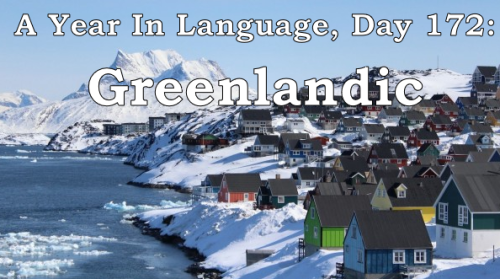#learn greenlandic
A Year in Language, Day 172: Greenlandic
Greenlandic is an Inuit language, a branch of the larger Eskimo-Aleut family. It is spoken by 50-60,000 people in Greenland.
Greenland is unique as a new world country whose only official language is the native one, the colonial language Danish being demoted in 2009. Greenlandic’s rise to linguistic dominance comes hand in hand with the nations independence from Denmark and establishing a new modern orthography for the language, a source of pride for the now 100% literate nation. There are two primary dialects; West Greenlandic or Kalaallisut, and Eastern Greenlandic or Tunumiit oraasiat. Kalaallisut is the government standard and as a result Tunumiit oraasiat is considered endangered.
Like other Inuit and North American languages, Greenlandic is polysynthetic. This means that the language makes aggressive use of inflection and derivation to create single words with meanings that normally take who phrases or sentences in English. For a quick example “oqaq” is the word for tongue, “oqarpoq"is the derived verb for “he says”, and “oqaasilerisoq” is a linguist. Verbs are even more complex than nouns, and raise questions about the basic nature of word class. In some linguistic and pedagogic works on the language you will find the term “postbase” referring to a kind of semantically “heavy” verbal suffix. These “postbases” often have the same meaning as some common full verbs like “have”, “say”, or “think”, but exist only as derivations for other verbs.
Post link

